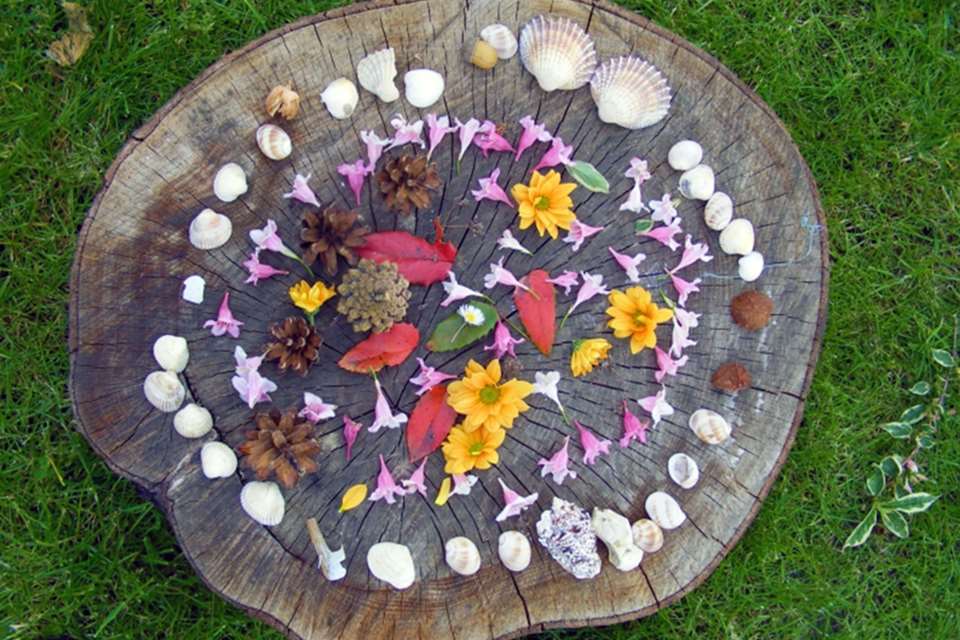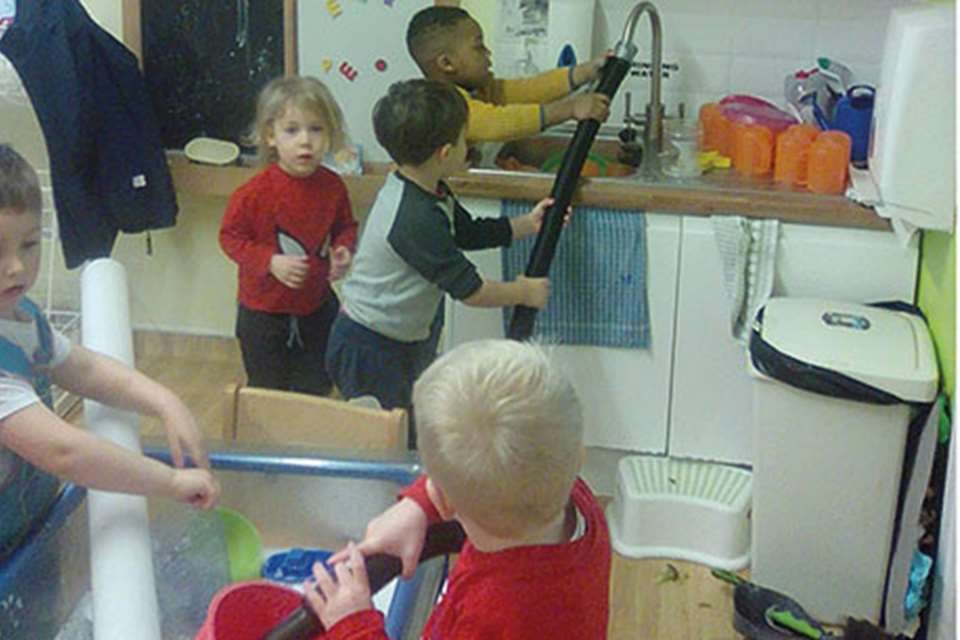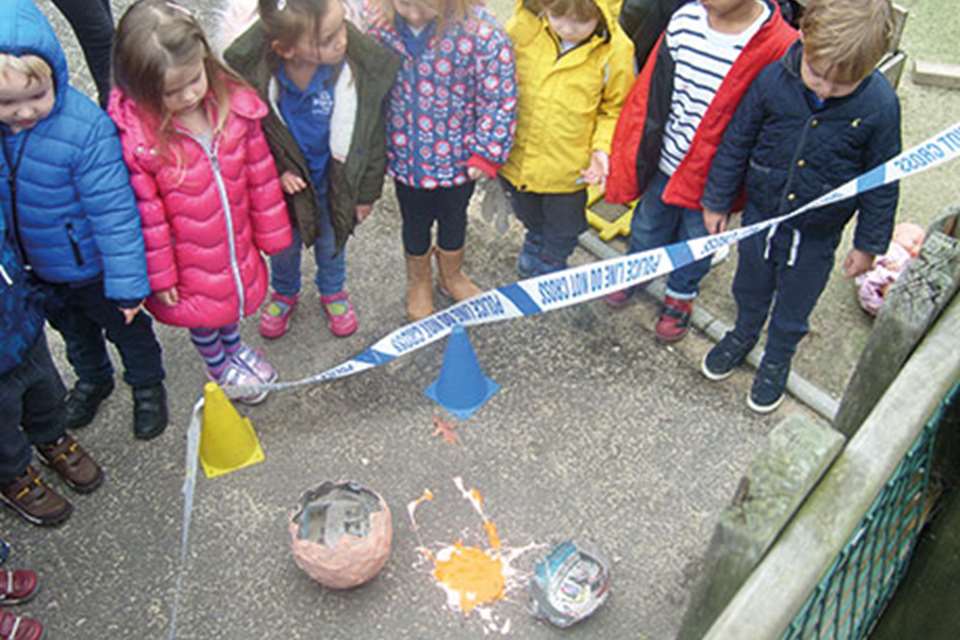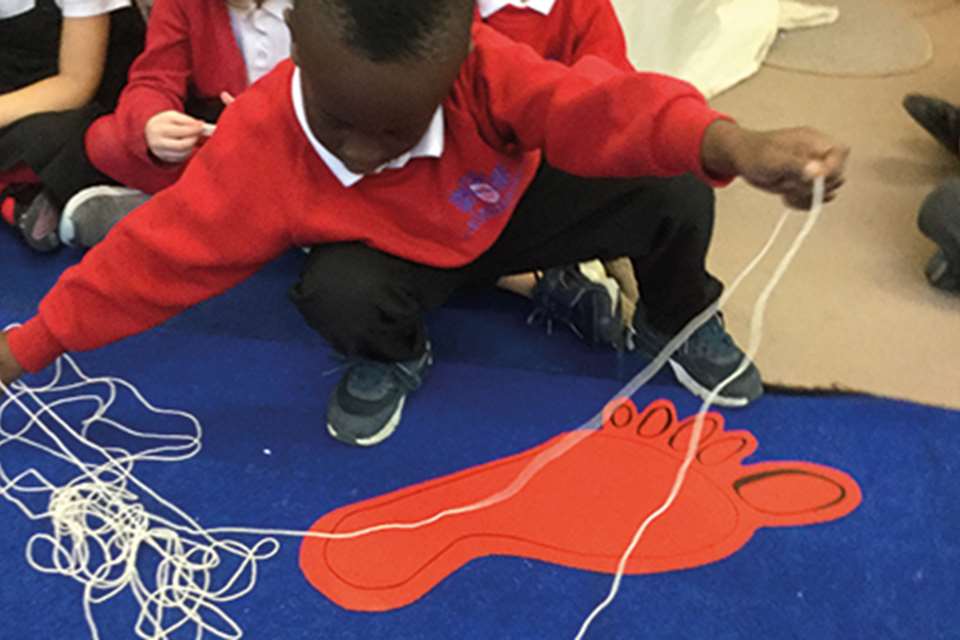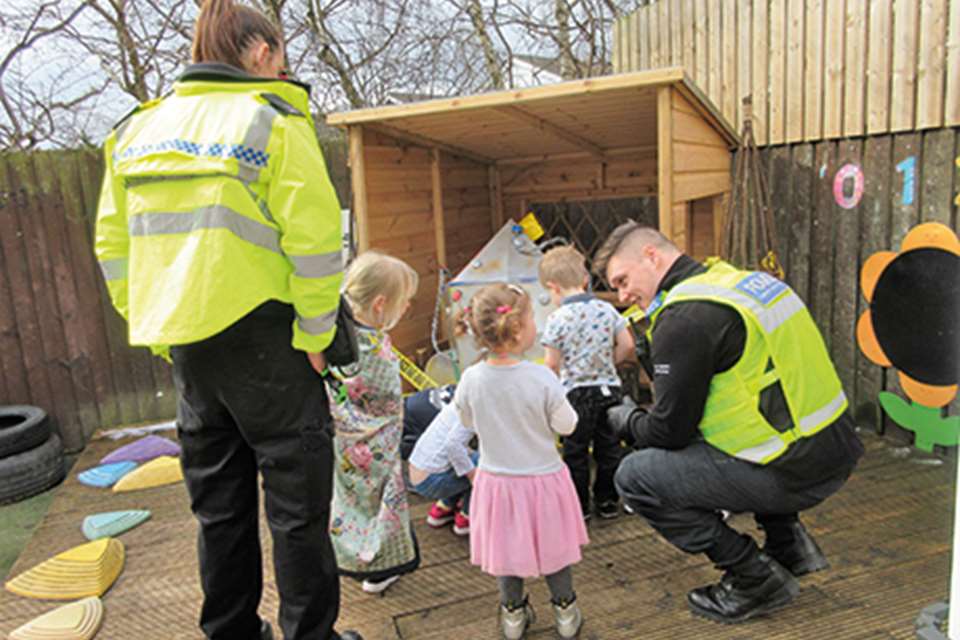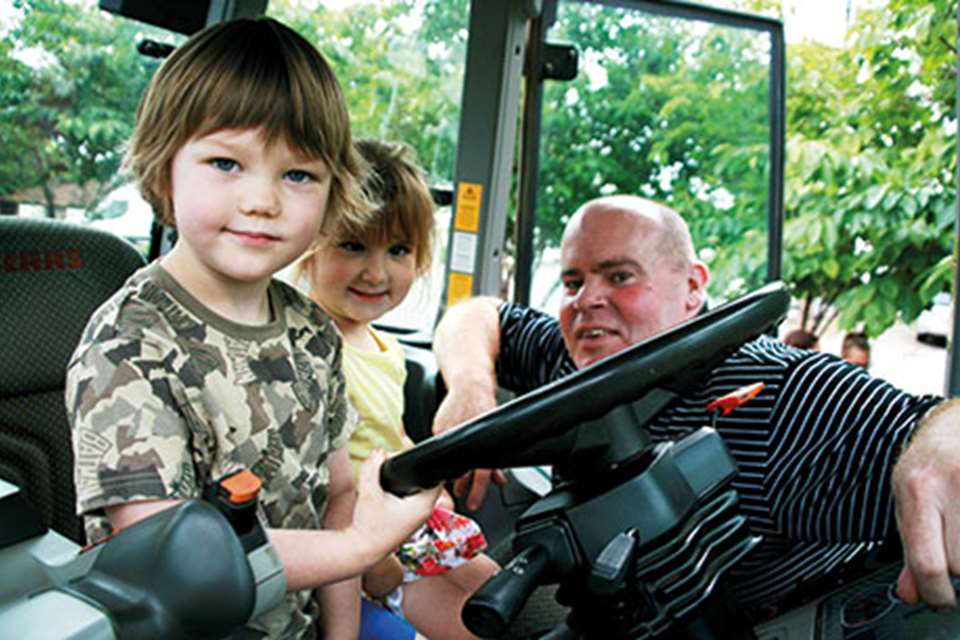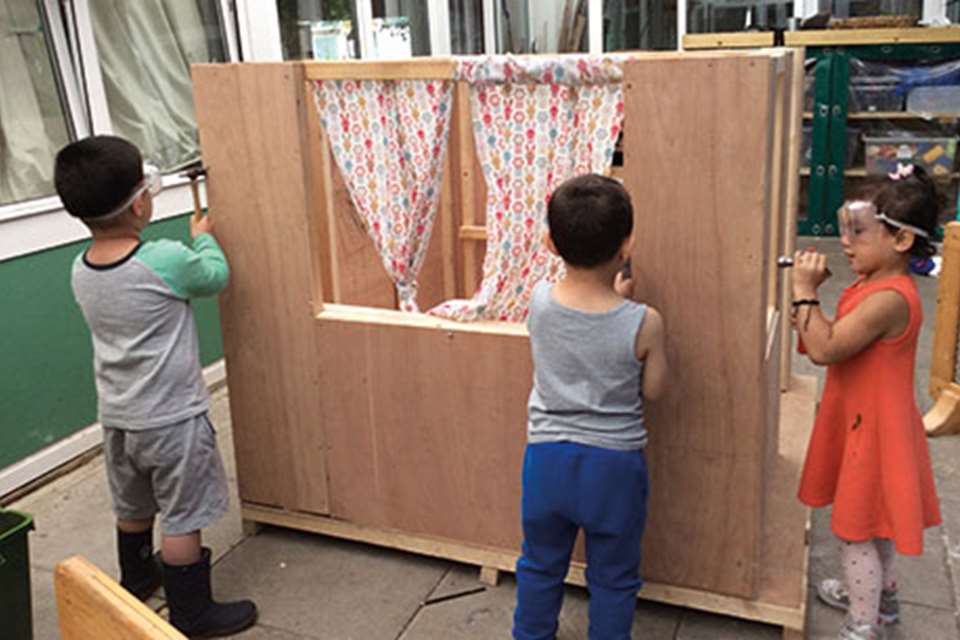EYFS Activities: We've Explored...Transient Art
Monday, September 17, 2018
How one setting provides the opportunity for children to make transient art, and what they get out of it. Meredith Jones Russell reports
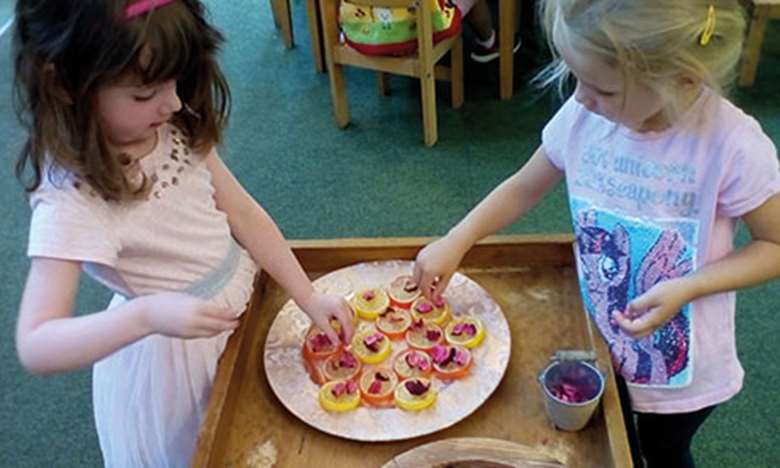
Download the PDF of this article
At Busy Bees Durham, children have been involved in creating their own works of transient art.
Transient art describes anything creative or imaginative that doesn’t stay in one place for long and is not rooted in any specific technique or methodology. Often, it involves the use of collections of loose parts that are open-ended and which children can manipulate, move and change to create artworks. It is also sometimes called ‘no-glue’, ‘environmental’ or ‘land’ art.
Emma Mickle, senior practitioner at Busy Bees, describes it as ‘non-permanent, constantly evolving and process-orientated creativity in action’.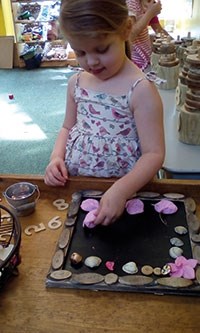 The nursery has been providing children with the opportunity to create transient art for eight years. The project began on a small scale, with children receiving small heuristic bags to encourage collections of loose parts. Staff built on the idea by approaching local businesses, construction companies and supermarkets for donations of resources, and training on transient art was rolled out to the whole staff team. In the last year, transient art has become part of the nursery’s continuous provision.
The nursery has been providing children with the opportunity to create transient art for eight years. The project began on a small scale, with children receiving small heuristic bags to encourage collections of loose parts. Staff built on the idea by approaching local businesses, construction companies and supermarkets for donations of resources, and training on transient art was rolled out to the whole staff team. In the last year, transient art has become part of the nursery’s continuous provision.
Children aged between three and four have been taking part in the project, which begins in the outdoors. ‘Loose parts and presenting them in a visually appealing way are key ingredients of transient art, and we very much believe the environment provides the best resources,’ Ms Mickle says.
‘We have a lovely wooded area behind the nursery, which is the perfect place to collect conkers, leaves, pinecones and sticks, as well as in our own garden. Any other resources usually come from our families, as we believe one man’s trash is another man’s treasure.’
A RANGE OF THEMES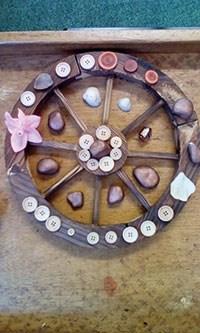 To keep the project fresh, the team at Busy Bees focuses on different themes. Over the summer, the loose parts used have included colourful petals, shells, coloured buttons, fruit segments and bamboo sticks, but as winter approaches, staff will change these to different-coloured leaves, conkers, pinecones, acorns and twigs to reflect the changing seasons.
To keep the project fresh, the team at Busy Bees focuses on different themes. Over the summer, the loose parts used have included colourful petals, shells, coloured buttons, fruit segments and bamboo sticks, but as winter approaches, staff will change these to different-coloured leaves, conkers, pinecones, acorns and twigs to reflect the changing seasons.
‘We are constantly evolving our approach and finding ways we can improve,’ Ms Mickle says. ‘We want to start looking at the interests of the children next. For example, one boy loves space, so we are going to create some space-themed work using black paper, glass pebbles, wooden shapes like rectangles and triangles to make rockets, metal jewellery, beads, glitter and baubles.’
Often, transient art is conducted in a ‘free’ space, such as on the ground or on a table. At Busy Bees, however, they sometimes choose to provide a frame such as a small piece of paper, plate, tray or wheel.
‘We often create a large space with a big piece of fabric or sheet out on the floor, and we have a big tree stump log outside and sometimes place pieces on that, but you can just as easily use an A4 piece of paper,’ Ms Mickle explains. ‘We’re very aware not all nurseries have loads of resources, but this is partly why transient art can be so good; you really don’t need much. It can be on a small table or within a confined space, effectively it can happen anywhere.’
Varying the space used can provide different challenges for children, Ms Mickle adds.
‘Sometimes it is nice to make the art their own thing by keeping it in a confined space to help them do independent work. But of course it can be done just as well in a bigger space which allows them to work collaboratively and share ideas. They have to take turns with the resources and they support and find out more about each other, talking about what they have made and what they are interested in.’
CURRICULUM LINKS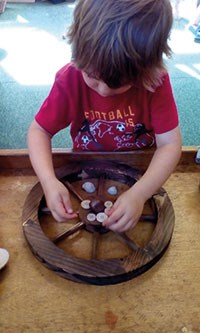 This opportunity to develop communication is just one of the ways transient art can link to other areas of learning. At Busy Bees, staff have noticed children using a wider vocabulary, such as words about textures and sizes.
This opportunity to develop communication is just one of the ways transient art can link to other areas of learning. At Busy Bees, staff have noticed children using a wider vocabulary, such as words about textures and sizes.
‘The activities are all about arrangement, sequencing and making patterns, which are good maths concepts,’ Ms Mickle explains. ‘They also encourage use of the language of construction and shapes. It is very interesting to see children working with a purpose; they have a thing in mind that they want to construct and their imagination allows them to do that.’
Ms Mickle says that while both boys and girls engage well in transient art activities, there are some differences in their approaches. ‘We do notice a lot of the boys are far more engaged in transient art than they ever are in writing or role play,’ she says. ‘They are also definitely more interested in the construction side of the activities. Meanwhile, we have one little girl who has a particularly powerful imagination and she really goes into her own little world when she does it. She makes up a little story to go with it and says “I am making my own world with my own people in”.’ Ms Mickle says the work can be liberating for children. ‘You don't have to have an end product; it is such an open-ended activity that it can always remain a work in progress. We can capture the children’s hard work and creativity through photos. This allows them to revisit what they have achieved, and taking multiple photos will record the learning process that took place.’
Ms Mickle says the work can be liberating for children. ‘You don't have to have an end product; it is such an open-ended activity that it can always remain a work in progress. We can capture the children’s hard work and creativity through photos. This allows them to revisit what they have achieved, and taking multiple photos will record the learning process that took place.’
The nursery forwards photographs of the project to parents using the iConnect online learning journal, and also includes updates in its newsletter. Staff also offer the parents an opportunity to interact with the work themselves at stay-and-play days.
INCLUDING TWOS
Next, the Busy Bees team is looking to extend its transient art project to younger children.
Ms Mickle explains, ‘We are planning to bring the activities to our two-year-olds. Transient art is quite age-dependent in terms of which loose parts can be used, so we will need to do risk assessments. But the younger ones go for walks and collect sticks and things, so we see no reason why the opportunity to use those pieces in art and get all the benefits of the project shouldn't be extended to them.’
ART BOOKS
 Katie’s Picture Show
Katie’s Picture Show
by James Mayhew
Katie’s very first adventure is the classic story of her visit with Grandma to the National Gallery, where five famous paintings come to life. Her adventures take in Constable’s The Hay Wain and Renoir’s The Umbrellas. 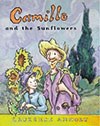 Camille and the Sunflowers
Camille and the Sunflowers
by Laurence Anholt
A strange man with a yellow beard arrives in Camille's town wearing a straw hat. The man turns out to be Van Gogh, and the story provides an introduction to the painter through the eyes of a young boy entranced by his work. The book, which features reproductions of Van Gogh’s work, is part of Anholt’s ‘Artists’ series.
Bear Hunt 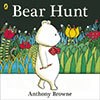
by Anthony Browne
In this story of a clever bear and his magic pencil, everything Bear draws becomes real. He draws a rope that he can swing on and a circle he can climb through. And when two hunters come after him, his pencil comes in very handy.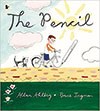 The Pencil
The Pencil
by Allan Ahlberg
A lonely little pencil starts to draw, first a boy, then a dog, a cat, a whole town for them to play in and finally a paintbrush, which adds colour to everything. But it’s not long before trouble starts when new characters complain about their appearance, and the pencil has no choice but to draw a rubber. Will the rubber erase everything?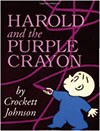 Harold and the Purple Crayon
Harold and the Purple Crayon
by Crockett Johnson
Armed only with an oversized purple crayon, Harold goes for a walk in the moonlight and draws himself a landscape on the way full of beauty and excitement. This magical journey gives the sense that anything is possible, and has been delighting readers for more than 60 years.
Frida Kahlo and her Animalitos 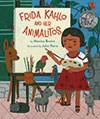 by Monica Brown
by Monica Brown
This picture book biography is based on the life of one of the world's most influential painters, Frida Kahlo, and the animals that inspired her art and life. Brown's story recounts Frida's beloved pets; two monkeys, a parrot, three dogs, two turkeys, an eagle, a black cat, and a fawn, and playfully considers how the artist embodied the different characteristics of each animal.?


